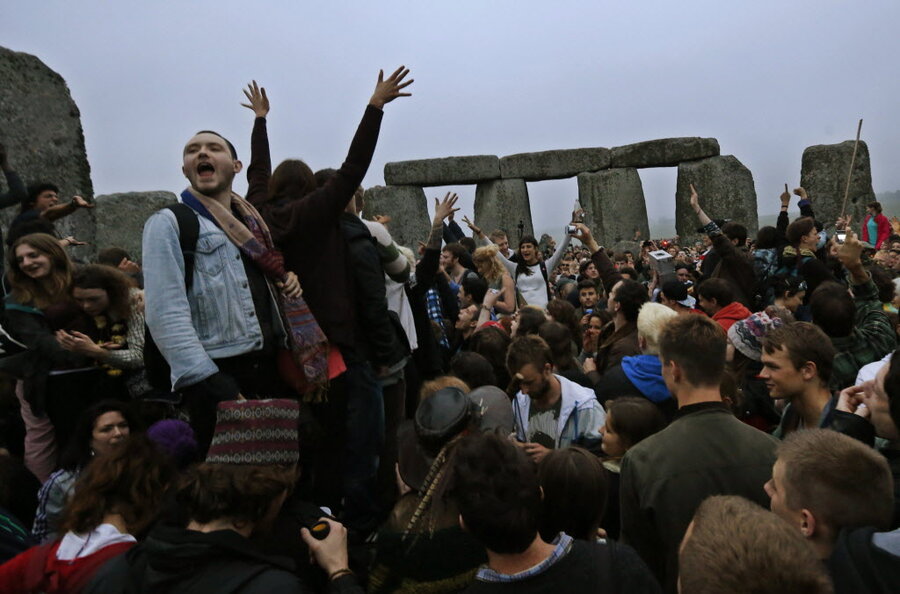First day of summer 2013: Party like it's 13 A.D.
Loading...
Attention residents of the Northern Hemisphere: The first day of summer is here, inaugurated by a summer solstice Google Doodle that shows an animated wave cascading over beach-goers clad in swim-caps.
This year, the solstice officially occurred at 1:04 a.m. Eastern time.
So what exactly happens at this magical moment? The summer solstice marks the day that we get the most sunlight.
The word “solstice” is a combination of the Latin words, "sol," meaning "sun," and "sisto," meaning "to stand." In reality, the sun doesn’t stop rotating, but the solstice is the day that it is visible for the longest amount of time, so it seems to stand still.
If you were to look at the sun on Friday, at high noon, from the Tropic of Capricorn, it will appear to be directly overhead, or at its zenith (though it is highly advised not to look directly at the sun…). On other days during the year, the sun is never quite overhead at high noon.
In ancient cultures, the solstice was a cause for celebration. Ancient Greeks heralded the summer solstice as the first day of the year with festivals honoring Cronus, the god of agriculture and time, and Ancient Romans took the day to honor Vesta, the goddess of the hearth. The Egyptians constructed the Great Pyramids so that the sunset would be visible between the two when viewed from the Great Sphinx. In China, the day was traditionally taken to honor the Earth’s feminine forces, or “yin.” Northern Europeans and Celts celebrated the day with bonfires and festivals, and as Christianity spread, traditional pagan celebrations were incorporated into St. John’s Day, which was celebrated around the same time.
Modern celebrations have become increasingly sparse in America, but pockets of pagan religious groups around the globe still celebrate the holiday. Most notable among today’s celebrations is Stonehenge, where over 20,000 people gathered this year to watch the sun rise on the longest day of the year.
Meanwhile, in the Southern Hemisphere, the Google Doodle has a winter solstice sketch: a scarf that curves and twists to spell out “Google.” The winter solstice marks the shortest day of the year for those south of the Equator. The summer solstice in the Southern Hemisphere will occur on Saturday, Dec. 23, 2013.








